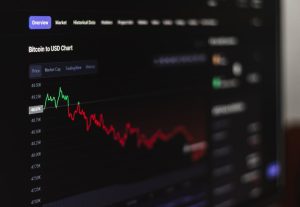The Role of Technical Analysis in Analyzing Correlation Forex Pairs
When it comes to forex trading, understanding the relationship between currency pairs is crucial. One of the most important aspects of this relationship is correlation, which refers to the statistical measure of how two currency pairs move in relation to each other. Analyzing correlation forex pairs can provide valuable insights for traders, and technical analysis plays a vital role in this process.
Technical analysis is a method of analyzing financial markets by studying historical price and volume data. It focuses on identifying patterns, trends, and other indicators to predict future price movements. In the context of analyzing correlation forex pairs, technical analysis helps traders understand the relationship between two currency pairs and how they might move in sync or diverge from each other.
There are several technical tools and indicators that can aid in analyzing correlation forex pairs. One commonly used tool is the correlation coefficient, which measures the strength and direction of the relationship between two variables. In the case of forex trading, the correlation coefficient helps traders determine how closely two currency pairs move together or in opposite directions.
By using the correlation coefficient, traders can identify currency pairs with a strong positive correlation, meaning they tend to move in the same direction. For example, if the correlation coefficient between EUR/USD and GBP/USD is +0.80, it indicates a strong positive correlation. This means that when EUR/USD goes up, GBP/USD is likely to go up as well, and vice versa.
On the other hand, a negative correlation indicates that two currency pairs tend to move in opposite directions. For instance, if the correlation coefficient between USD/JPY and EUR/USD is -0.70, it suggests a strong negative correlation. This means that when USD/JPY goes up, EUR/USD is likely to go down, and vice versa.
Another important technical analysis tool for analyzing correlation forex pairs is chart patterns. Chart patterns, such as triangles, head and shoulders, or double tops, provide visual representations of price movements. Traders can use these patterns to identify potential correlations between currency pairs.
For example, if two currency pairs display similar chart patterns, it suggests a correlation between them. If one currency pair breaks out of a triangle pattern and starts an uptrend, there is a higher probability that the other currency pair will follow a similar pattern. Traders can capitalize on this correlation by opening positions in both currency pairs to maximize their profit potential.
Moving averages are also commonly used in technical analysis to analyze correlation forex pairs. Moving averages smooth out price data over a specified period, providing a clear indication of the trend direction. By comparing the moving averages of two currency pairs, traders can identify correlations and potential trading opportunities.
For instance, if the 50-day moving average of USD/CHF is moving in the same direction as the 50-day moving average of EUR/USD, it suggests a positive correlation between the two pairs. Traders can use this information to confirm their analysis and make informed trading decisions.
In conclusion, technical analysis plays a crucial role in analyzing correlation forex pairs. By using tools such as the correlation coefficient, chart patterns, and moving averages, traders can gain valuable insights into the relationship between currency pairs. Understanding these correlations can help traders make more informed decisions, manage risk effectively, and maximize their profit potential in the forex market.





